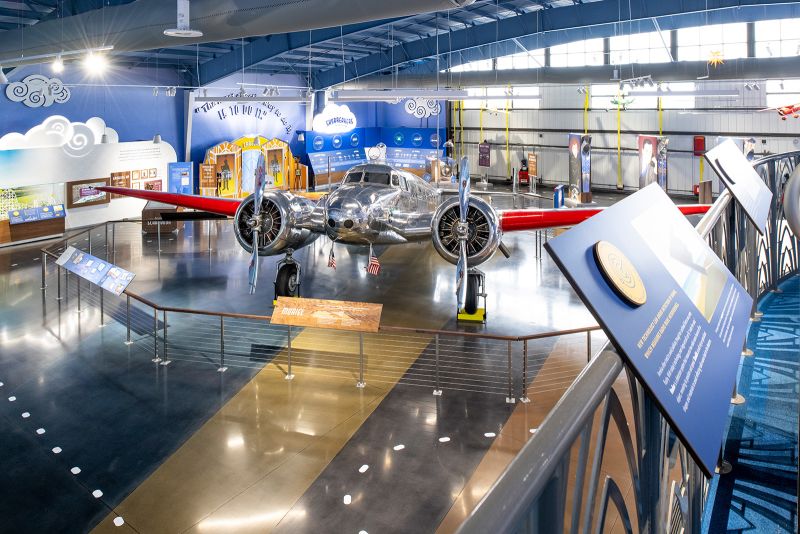Amelia Earhart’s achievements in the early decades of aviation captivated the world.
The daring pilot still holds a grip on our imaginations nearly a century later – and now, Earhart fans can bask in her globe-trotting history back on her native Kansas soil.
The Amelia Earhart Hangar Museum is scheduled to open on Friday in her hometown of Atchison, about an hour’s drive north of Kansas City. A ribbon-cutting ceremony is set for noon CT, and then at 12:30 p.m., the doors open to the public.
The centerpiece of the museum is Muriel, the world’s only remaining Lockheed Electra 10-E aircraft, according to a news release from the museum.
“Named after Earhart’s younger sister, Grace Muriel Earhart Morrissey, Muriel is identical to the plane Earhart flew on her final, fateful flight around the world” in 1937, according to the release.
The museum will also be packed with 14 interactive exhibits.
“The new Amelia Earhart Hangar Museum will celebrate a woman who showed us what it means to ‘reach for the stars,’ ” said Kansas Gov. Laura Kelly in the release.
Earhart’s legacy
“There’s not a museum like this about Amelia. There are a lot of STEM museums, and there are a lot of history museums,” Seaburg said, referencing the acronym for Science, Technology, Engineering and Math.
“What we’ve done is combine STEM and history into a unique museum about her life but also learning about the STEM of flying, aviation and centrifugal force – all the different things kids need to learn and adults, too.”
Seaburg noted Earhart, the first woman to fly solo across the Atlantic Ocean, was more than a pioneer of the skies.
“She was a suffragette. Because of her status and because people knew her, she met with President [Herbert] Hoover about getting women the vote,” she said.
Her disappearance over the Pacific Ocean in 1937 was “a huge loss to the entire nation. Kansas obviously and Atchison … and she was an international figure.”
Muriel and the exhibits
Seaburg said the museum’s Muriel is one of only 14 Lockheed Electra 10-E aircraft ever produced. It’s a twin of the one Earhart flew. It was second off the line in 1935 and went to work for Pan American Airways in Brazil.
“The reason Amelia chose that plane was it went higher, faster. It was the premier of the day. She wanted to have the best airplane she could pick.”
While other Electra 10-Es were put into military service during World War II and outfitted for combat, this plane continued to fly civilian passengers. “So even the fuel lines and everything is exactly like Amelia’s plane.”
She and her husband were able to acquire the plane in 2016 just before his death and then built the $17 million, Art Deco-style hangar and museum.
Among the interactive exhibits, people will be able to:
• Enter a full-scale replica of Muriel’s cockpit to experience Earhart’s perspective
• Pilot a virtual reality recreation of Earhart’s historic 1932 transatlantic flight
• Learn firsthand the precision needed to forge the nearly 85,000 metal rivets that hold Muriel together
• Trace 3-D aircraft holograms through the history of flight — from unmanned gliders and biplanes
Click here to find out more about the opening, ticket costs and other details.
“What I love about Amelia was she more than just an aviator. She was more than just getting lost in the ocean and whatever happened to her. She’s relevant today because she was a pioneer,” said Seaburg. “We want people going away from this thinking: ‘I can dream my dreams.’”
